Diving into the vertical dimension of elasmobranch movement ecology
August 2022
Samantha Andrzejaczek, Tim C D Lucas, Maurice C Goodman, Nigel E Hussey, Amelia J Armstrong, Aaron Carlisle, Daniel M Coffey, Adrian C Gleiss, Charlie Huveneers , David M P Jacoby , Mark G Meekan, Johann Mourier, Lauren R Peel, Kátya Abrantes, André S Afonso, Matthew J Ajemian, Brooke N Anderson, Scot D Anderson, Gonzalo Araujo, Asia O Armstrong, Pascal Bach, Adam Barnett, Mike B Bennett, Natalia A Bezerra, Ramon Bonfil, Andre M Boustany, Heather D Bowlby, Ilka Branco, Camrin D Braun, Edward J Brooks, Judith Brown, Patrick J Burke, Paul Butcher, Michael Castleton, Taylor K Chapple, Olivier Chateau, Maurice Clarke, Rui Coelho, Enric Cortes, Lydie I E Couturier, Paul D Cowley, Donald A Croll, Juan M Cuevas, Tobey H Curtis, Laurent Dagorn, Jonathan J Dale, Ryan Daly, Heidi Dewar, Philip D Doherty, Andrés Domingo, Alistair D M Dove, Michael Drew, Christine L Dudgeon, Clinton A J Duffy, Riley G Elliott, Jim R Ellis, Mark V Erdmann, Thomas J Farrugia, Luciana C Ferreira, Francesco Ferretti, John D Filmalter, Brittany Finucci, Chris Fischer, Richard Fitzpatrick, Fabien Forget, Kerstin Forsberg, Malcolm P Francis, Bryan R Franks, Austin J Gallagher, Felipe Galvan-Magana, Mirta L García, Troy F Gaston, Bronwyn M Gillanders, Matthew J Gollock, Jonathan R Green, Sofia Green, Christopher A Griffiths, Neil Hammerschlag, Abdi Hasan, Lucy A Hawkes, Fabio Hazin, Matthew Heard, Alex Hearn, Kevin J Hedges, Suzanne M Henderson, John Holdsworth, Kim N Holland, Lucy A Howey, Robert E Hueter, Nicholas E Humphries, Melanie Hutchinson, Fabrice R A Jaine, Salvador J Jorgensen, Paul E Kanive, Jessica Labaja, Fernanda O Lana, Hugo Lassauce, Rebecca S Lipscombe, Fiona Llewellyn, Bruno C L Macena, Ronald Mambrasar, Jaime D McAllister, Sophy R McCully Phillips, Frazer McGregor, Matthew N McMillan, Lianne M McNaughton, Sibele A Mendonça, Carl G Meyer, Megan Meyers, John A Mohan, John C Montgomery, Gonzalo Mucientes, Michael K Musyl, Nicole Nasby-Lucas, Lisa J Natanson, John B O'Sullivan, Paulo Oliveira, Yannis P Papastamtiou, Toby A Patterson, Simon J Pierce, Nuno Queiroz, Craig A Radford, Andy J Richardson, Anthony J Richardson, David Righton, Christoph A Rohner, Mark A Royer, Ryan A Saunders, Matthias Schaber, Robert J Schallert , Michael C Scholl, Andrew C Seitz, Jayson M Semmens, Edy Setyawan, Brendan D Shea, Rafid A Shidqi, George L Shillinger, Oliver N Shipley, Mahmood S Shivji, Abraham B Sianipar, Joana F Silva, David W Sims, Gregory B Skomal, Lara L Sousa, Emily J Southall, Julia L Y Spaet, Kilian M Stehfest, Guy Stevens, Joshua D Stewart, James A Sulikowski, Ismail Syakurachman, Simon R Thorrold, Michele Thums, David Tickler, Mariana T Tolloti, Kathy A Townsend, Paulo Travassos, John P Tyminski, Jeremy J Vaudo, Drausio Veras, Laurent Wantiez, Sam B Weber, R J David Wells, Kevin C Weng, Bradley M Wetherbee, Jane E Williamson, Matthew J Witt, Serena Wright, Kelly Zilliacus, Barbara A Block & David J Curnick
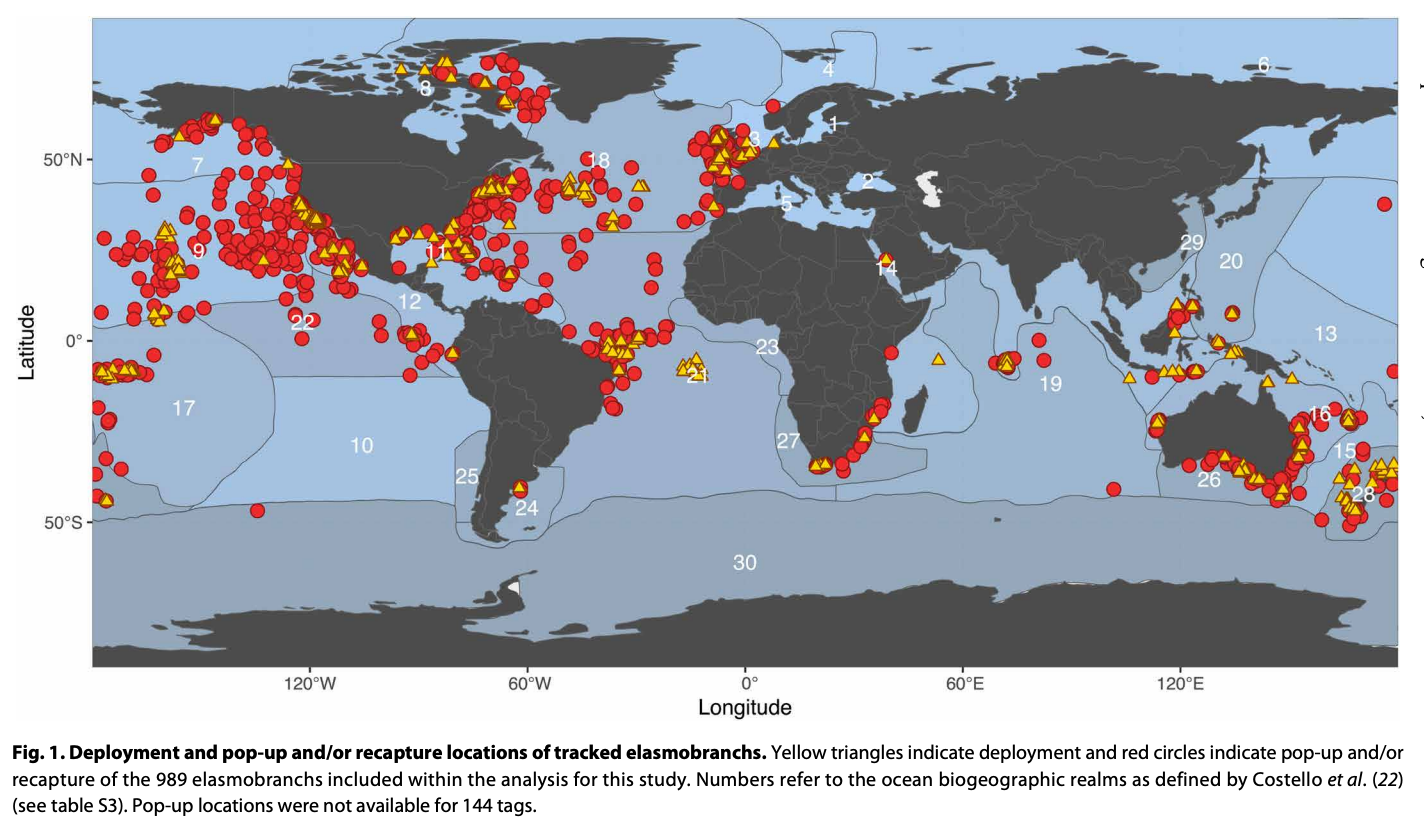
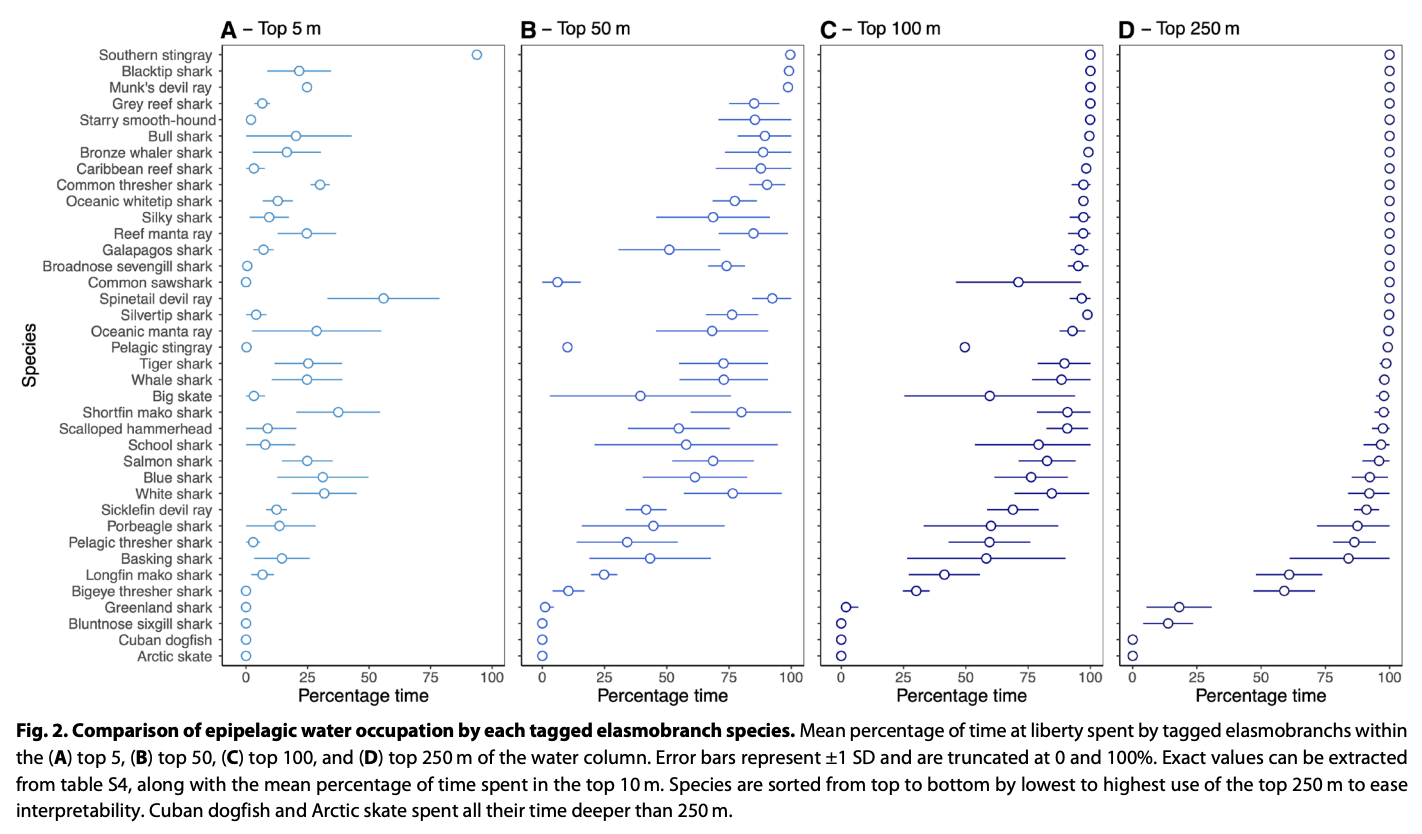
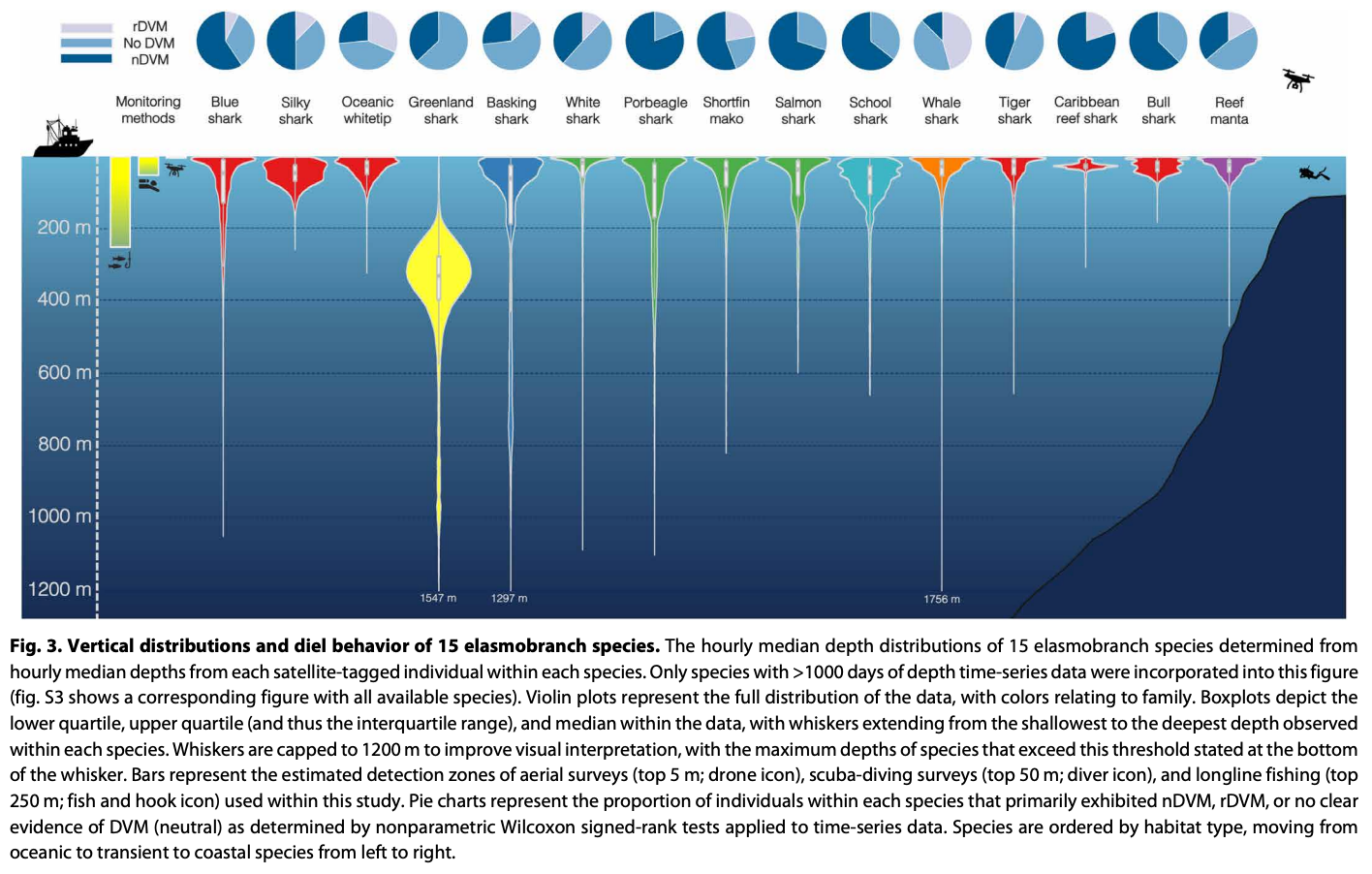
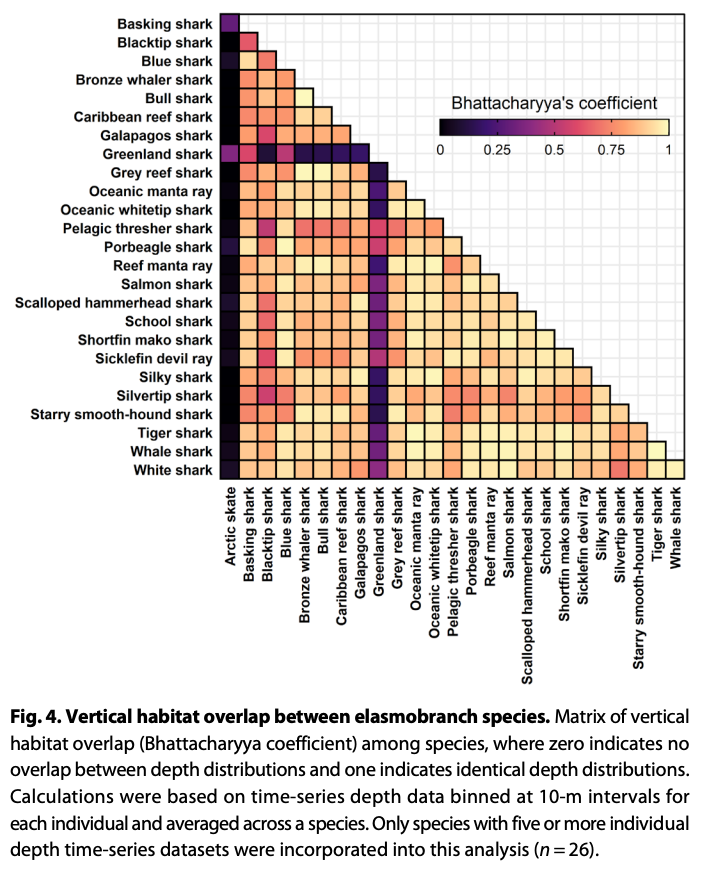
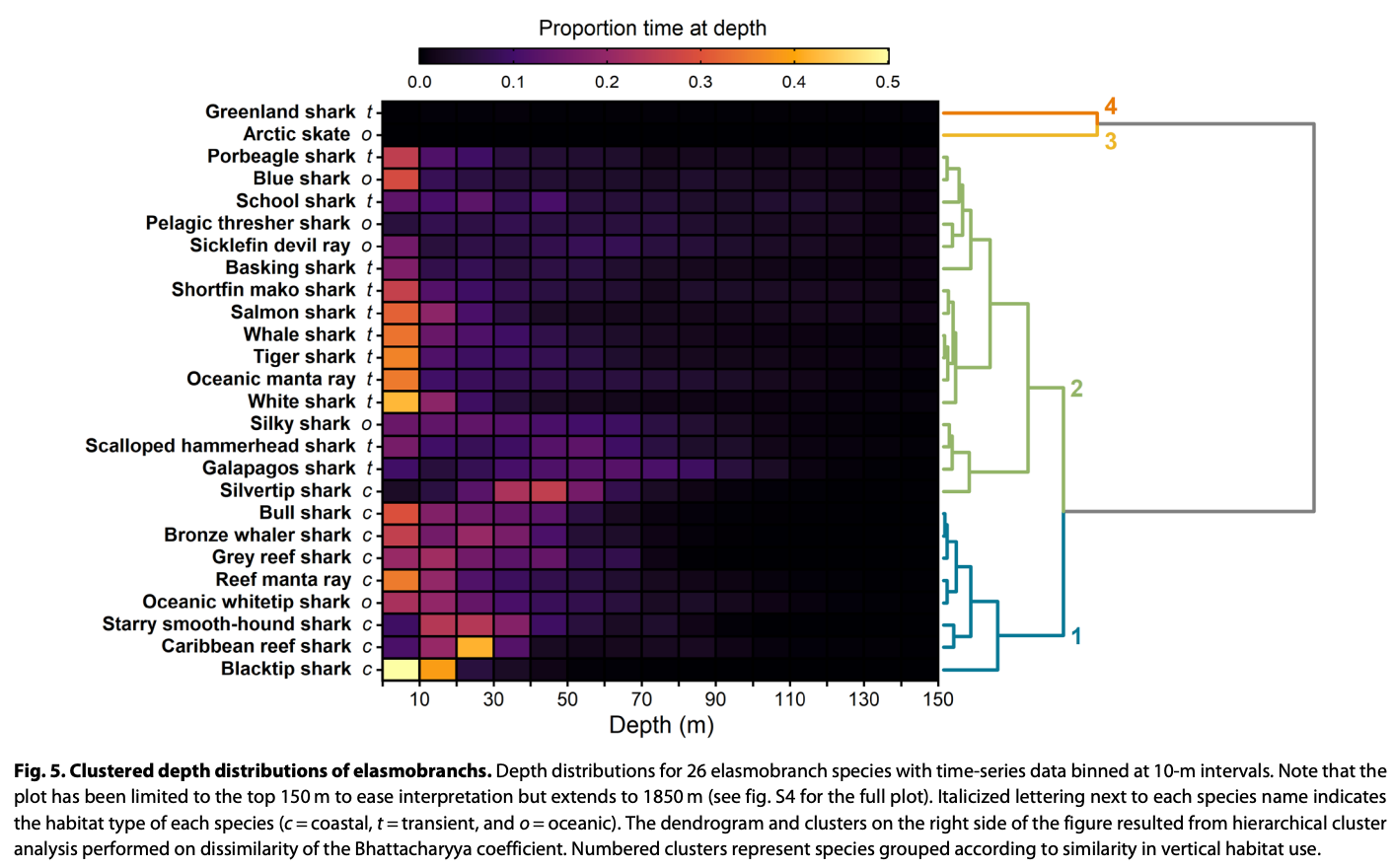
Summary: Understanding the movements of elasmobranchs in three dimensions is important for understanding their ecological roles and exposure to human-made pressures. Previous studies have mainly focused on horizontal movements, but this study compiled data from biotelemetry tags to examine vertical movement patterns. Results showed that elasmobranchs have high variability in these patterns and often overlap vertically with other species, increasing the likelihood of biologically interacting and facing similar risks from human-made threats. The authors emphasise the need to consider both horizontal and vertical movements in management and monitoring strategies for elasmobranchs.
Abstract
“Knowledge of the three-dimensional movement patterns of elasmobranchs is vital to understand their ecological roles and exposure to anthropogenic pressures. To date, comparative studies among species at global scales have mostly focused on horizontal movements. Our study addresses the knowledge gap of vertical movements by compiling the first global synthesis of vertical habitat use by elasmobranchs from data obtained by deployment of 989 biotelemetry tags on 38 elasmobranch species. Elasmobranchs displayed high intra- and interspecific variability in vertical movement patterns. Substantial vertical overlap was observed for many epipelagic elasmobranchs, indicating an increased likelihood to display spatial overlap, biologically interact, and share similar risk to anthropogenic threats that vary on a vertical gradient. We highlight the critical next steps toward incorporating vertical movement into global management and monitoring strategies for elasmobranchs, emphasizing the need to address geographic and taxonomic biases in deployments and to concurrently consider both horizontal and vertical movements.”
Infographics
Author Affiliations
Hopkins Marine Station, Stanford University
Department of Health Sciences, University of Leicester
Department of Integrative Biology, University of Windsor
See full publication for all 136 Author Affiliations
Funded by
Gordon and Betty Moore Foundation
Bertarelli Foundation
Comisión de Operación y Fomento de Actividades Académicas, Instituto Politécnico Nacional

